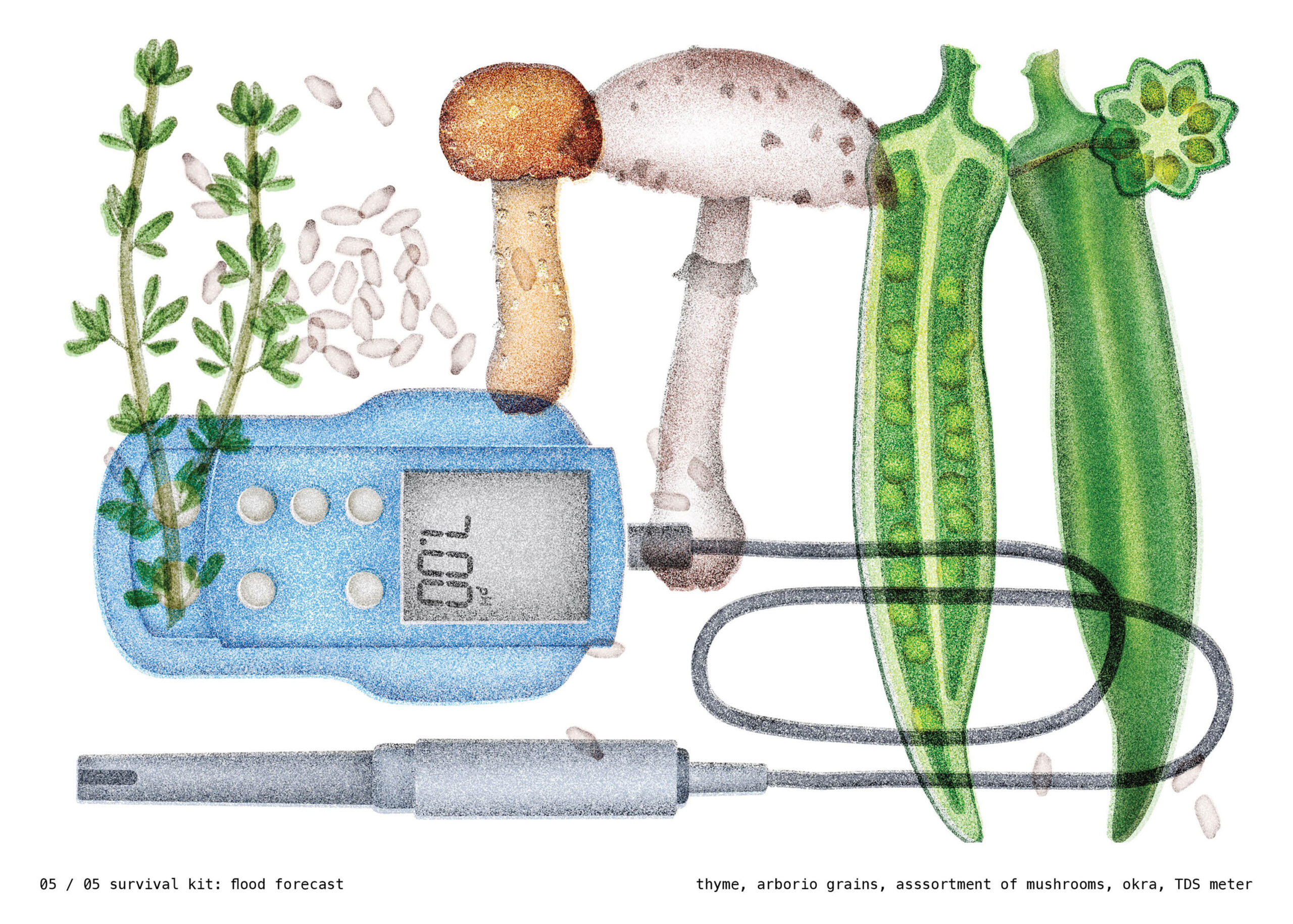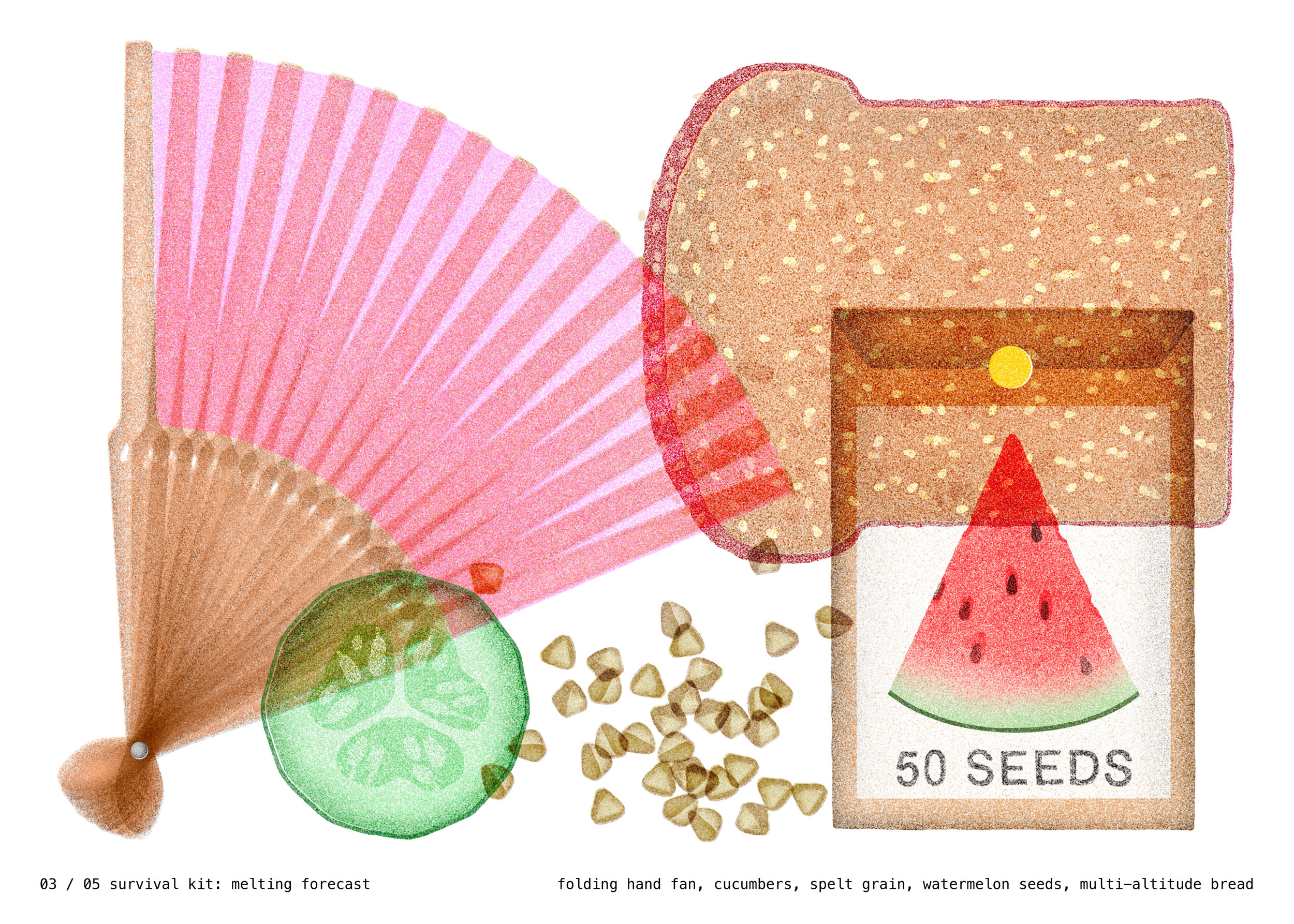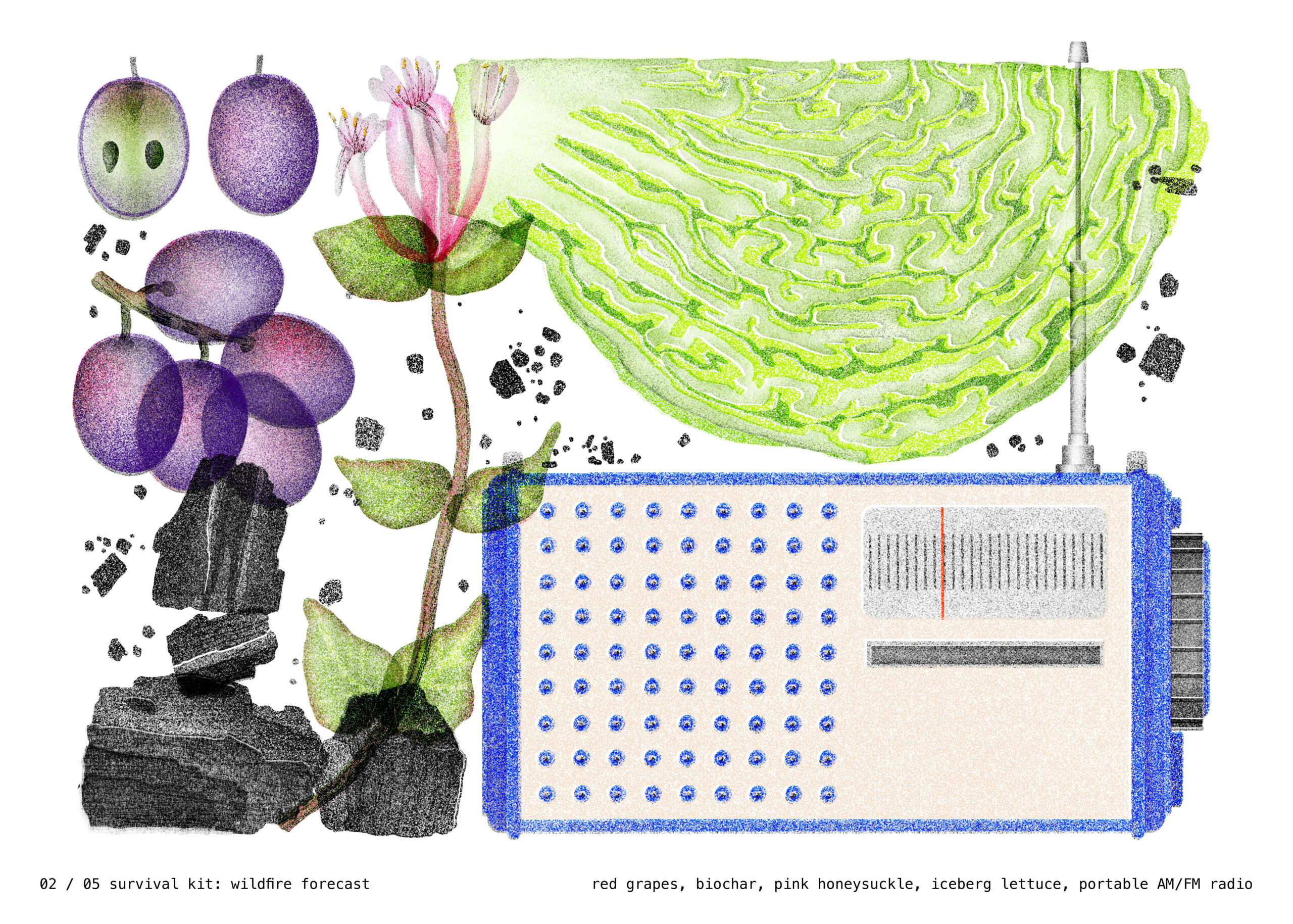The piece is the first in a series of food forecasts based on the edible plants that will be available in increasingly extreme environments and an exploration of creative strategies to incorporate these plants into our everyday lives. These foods are a glimpse into the way our shifting climate will impact our future diets.
Last May while swimming near Athens, Greece, I floated as if suspended — barely using any muscles to stay upright in the Mediterranean. It is the high salt density that creates the buoyancy of the water, so potent that it hardens into white lines on clothes and leaves your lips feeling seasoned. On the rocky water’s edge, tender green bursts of shockingly soft plants sprout from seemingly inhospitable ground. Capers, salicornia, sea fennel, and sea lavenders dot the coast, some of the rare plants (<2%) that can survive the salinity. Even more rare, these plants are edible. “Plants in the margins,” as agronomist/botanist Manos Bazanis refers to them, might serve as blueprints for our collective climate future,“These plants are teachers of how to survive these environments.”
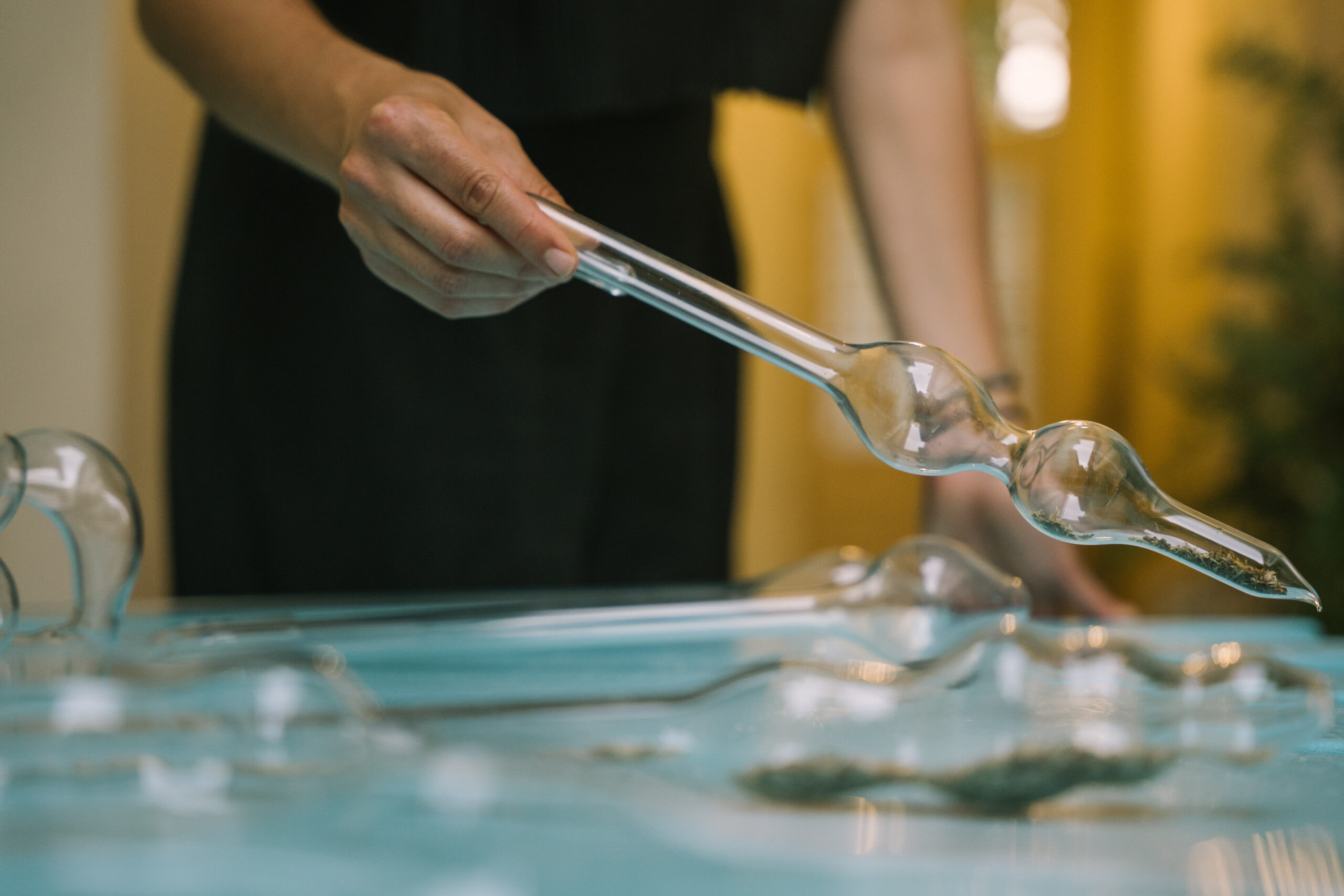
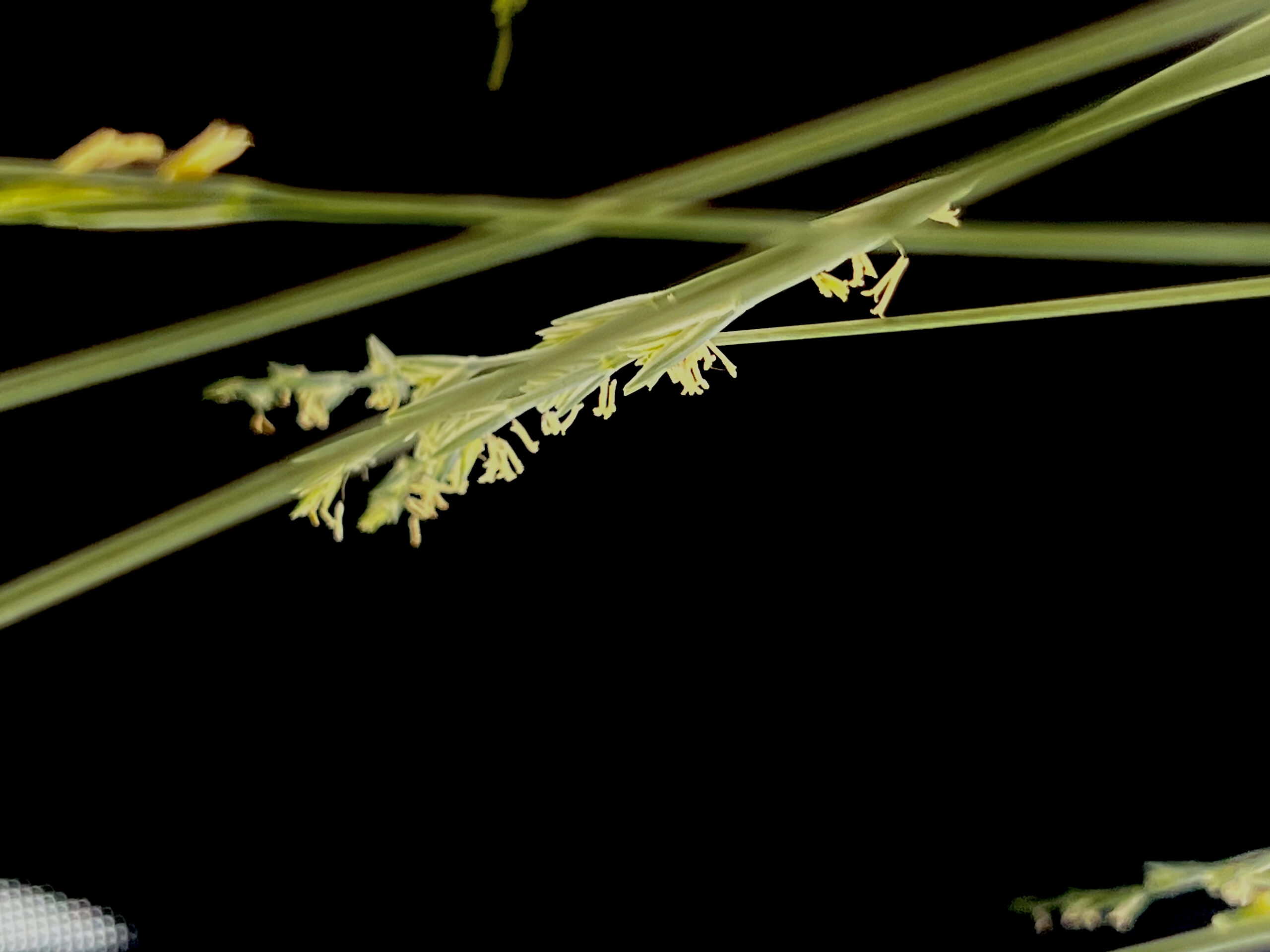
Last summer, as part of our collaboration at Office of the Hydrocommons curated by Eleni Riga at Atopos CVC in Athens, Bazanis and I grew a garden of edible halophytes from seeds he had foraged. We fondly referred to it as our future food garden, a glimpse into the foods that flourish in an emerging environment. We invited the public to tastings where I prepared dishes using these plants. We also hosted seed storage workshops, and organized discussions between heritage foragers and botanists who exchanged anecdotes delivered with such fondness that they felt like declarations of love. Halophytes from the Greek ἅλας halas, salt, and φυτόν phyton, plant, are the category of miraculous plants that sprout from salty and brackish soil. A climate that is increasingly common due to rising sea levels, agricultural runoff, contaminated groundwater and the discharge from desalination plants.
Salt is innocuous, vital, and when concentrated, lethal to most plants. From stories of the destruction of Carthage by the Romans to the Israeli army’s cruel plans to flood the tunnels of Palestine with salt water just last month, salt can be so damaging that “salting the earth” has been weaponized as an attempt to contaminate groundwater and to render soil infertile. Salt has the potential for centuries-long implications. Records of salt last generations, such as the primordial oceans covering the Himalayas which are memorialized through the quartz-like traces of pink salt their long-evaporated waters have left behind. The presence of this mineral is an indication that there was once water there. Most plants cannot survive changes in salinity, and whether it is sea level rise or contamination, these changing conditions have prompted farmers, scientists and chefs to determine ways of planting with salt.
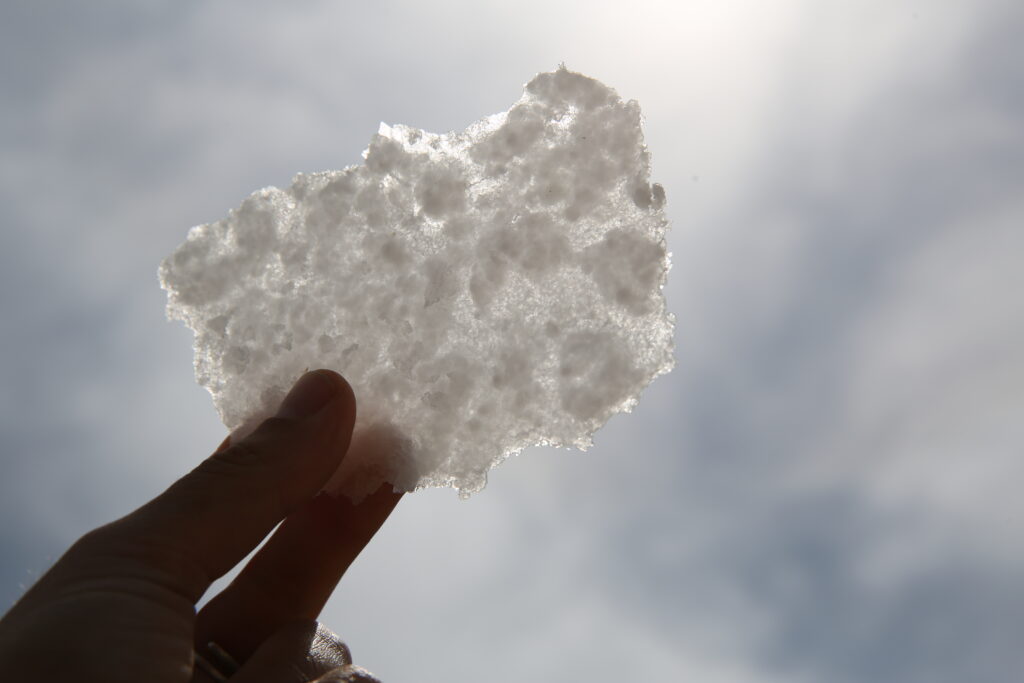
Eating and growing these plants is simultaneously projecting into the future and reviving the past. Many of these plants have been eaten for generations but have been largely overlooked in favor of imported and standardized crops. In the Venetian Lagoon, the team behind the Tidal Garden is working with foragers, farmers and chefs to incorporate some of these salt-tolerant plants into their repertoire. “They were once eaten and they were forgotten,” Filippo Grassi, one of the team members described. “It was one of the reasons [the public] rejected it, they associated these plants with famine and misery-” Lorenzo Barbasetti di Prun added, “[People have said] these plants are good for Michelin star restaurants and wartime.” It is a stigma the team understands and plays with, “hacking” comfort foods by sneaking the halophytes into pizza, icecreams, and chocolates, much as you would do with children, Lorenzo jokes. Despite the local Italian associations, a plant that can flourish and provide in salt zones, even during wartime, is worth nurturing. The Tidal Garden team’s ambition is to have a nursery that raises these salt-tolerant plants to distribute to farmers, and to develop a network of farmers who incorporate these plants into their croplists.
Floods and tides are not abstract in Venice, they are part of the lived choreography of the city as a sort of “amphibian” climate as Tidal Garden team member Lodovica Guarnieri called it, “We are already in a submerged environment. It is not a future prediction, it is already here. [Salt] is on the spectrum of the tide.” Salt exists before and after the water ebbs and flows and in the reclaimed lands used for farming, soil and sand is piled on what was once lagoon or marshes. Guarnieri describes the tide as part of locals’ “subconscious knowledge” and extreme floods are part of many people’s lived memories. In 1966, a large tide, or “acqua alta”, rose into the arable land and killed many of the fruit trees and even vineyards that were growing in the Venetian lagoon. The salty soil holds the record and a warning, while the thriving “spontaneous plants” provide a clue and answer for what can grow.
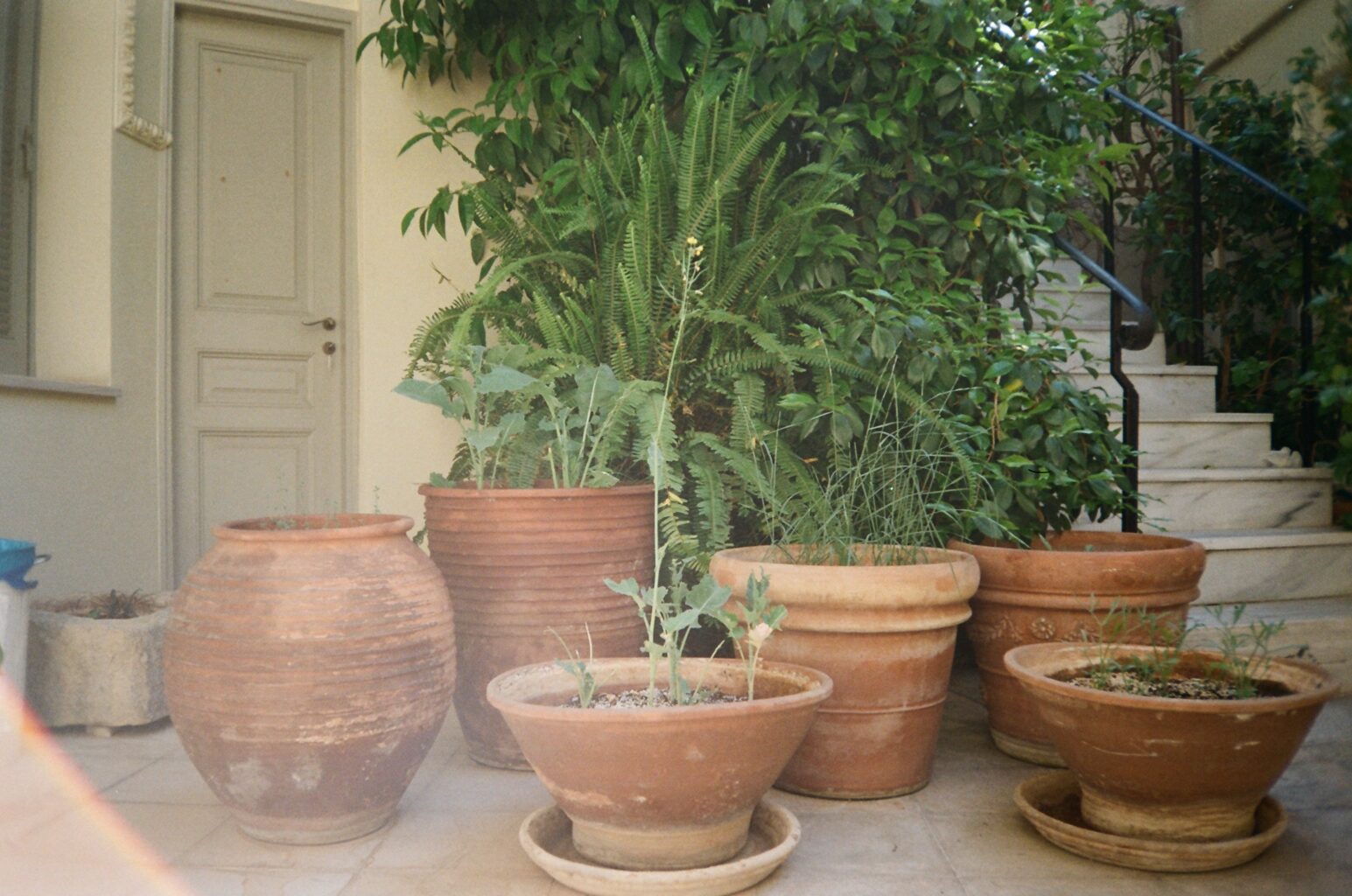
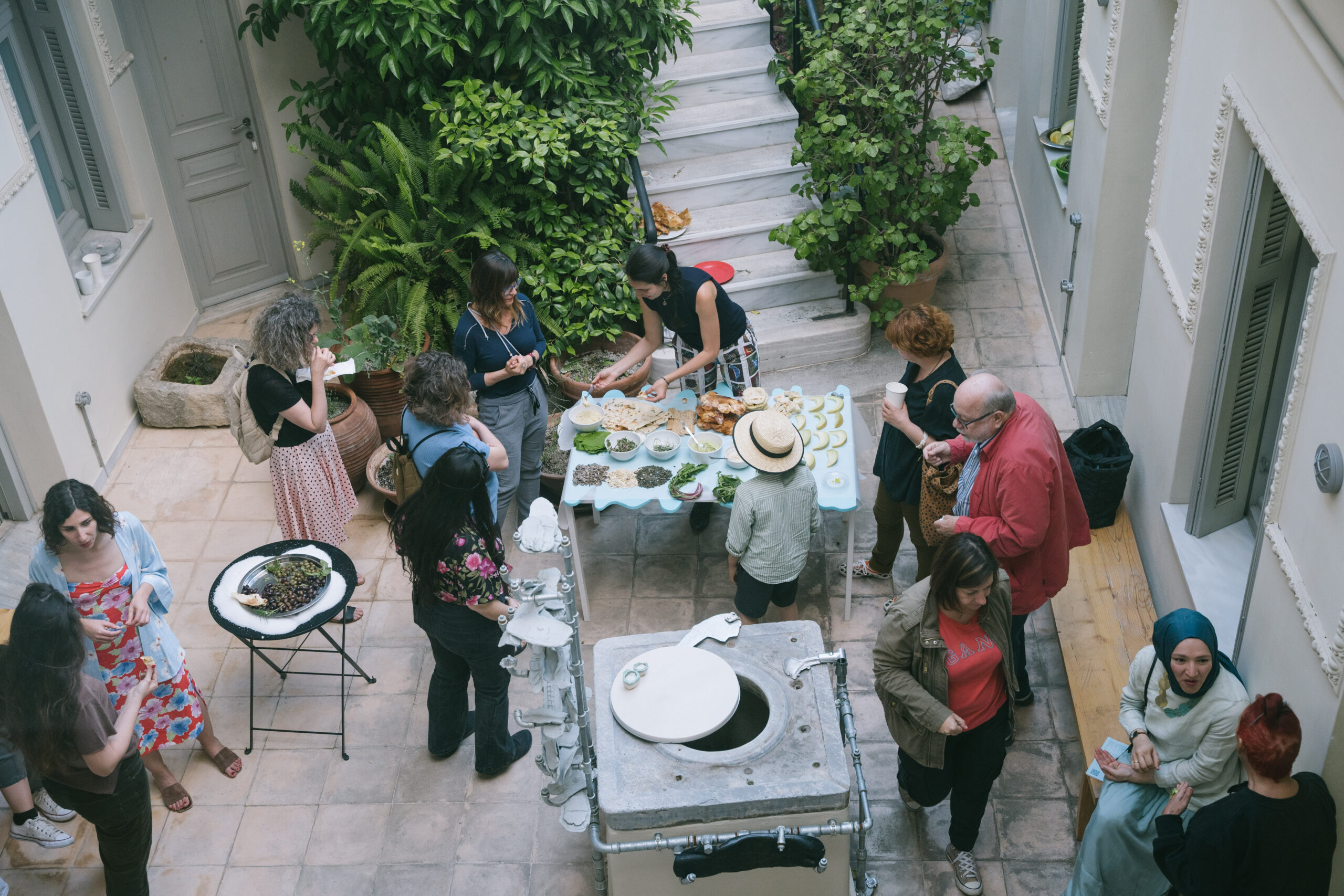
On a separate coast, facing similar increases in salinity, artist Mary Mattingly has been working with edible plants directly on the water itself. In her project Swale, an edible landscape and foodway installed on a reclaimed barge that floated down New York’s East River, the plants that got sprayed by sea water in passing were not surviving, which led her to investigate edible salt-tolerant plants.
Since then she has created living sculptures including one growing pickerelweed, . While it can be eaten raw, she cautions, it’s best cooked. Most recently her sculpture, Ebb Of A Spring Tide in Socrates Sculpture Park, an multi-level salt water garden filled with a wide variety of plants, is a conversation with the adjacent tide, the water, and the salt. “Rich in metaphors as well as practical application, including the concept of saline farming with salt-tolerant crops.” Mattingly aimed to familiarize people with this environment and investigate how a range of plants fared in salty soil. Surprisingly, crops like potatoes, onions, carrots, and tomatoes thrived. Currently, Mattingly is asking through her work “What are the roles of salt in a future replete with the effects of climate change? How might salt live in a more mythic imaginary?”
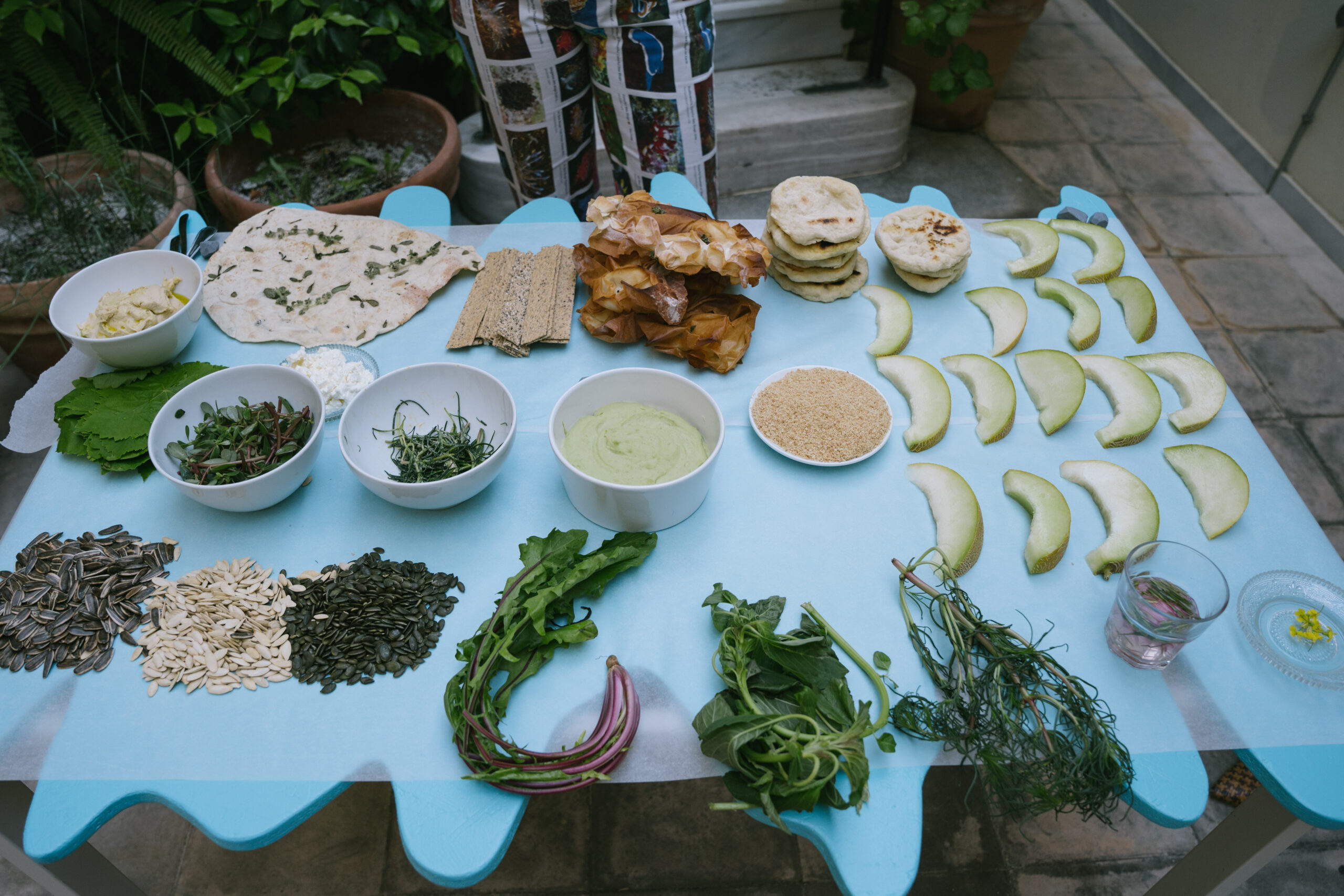
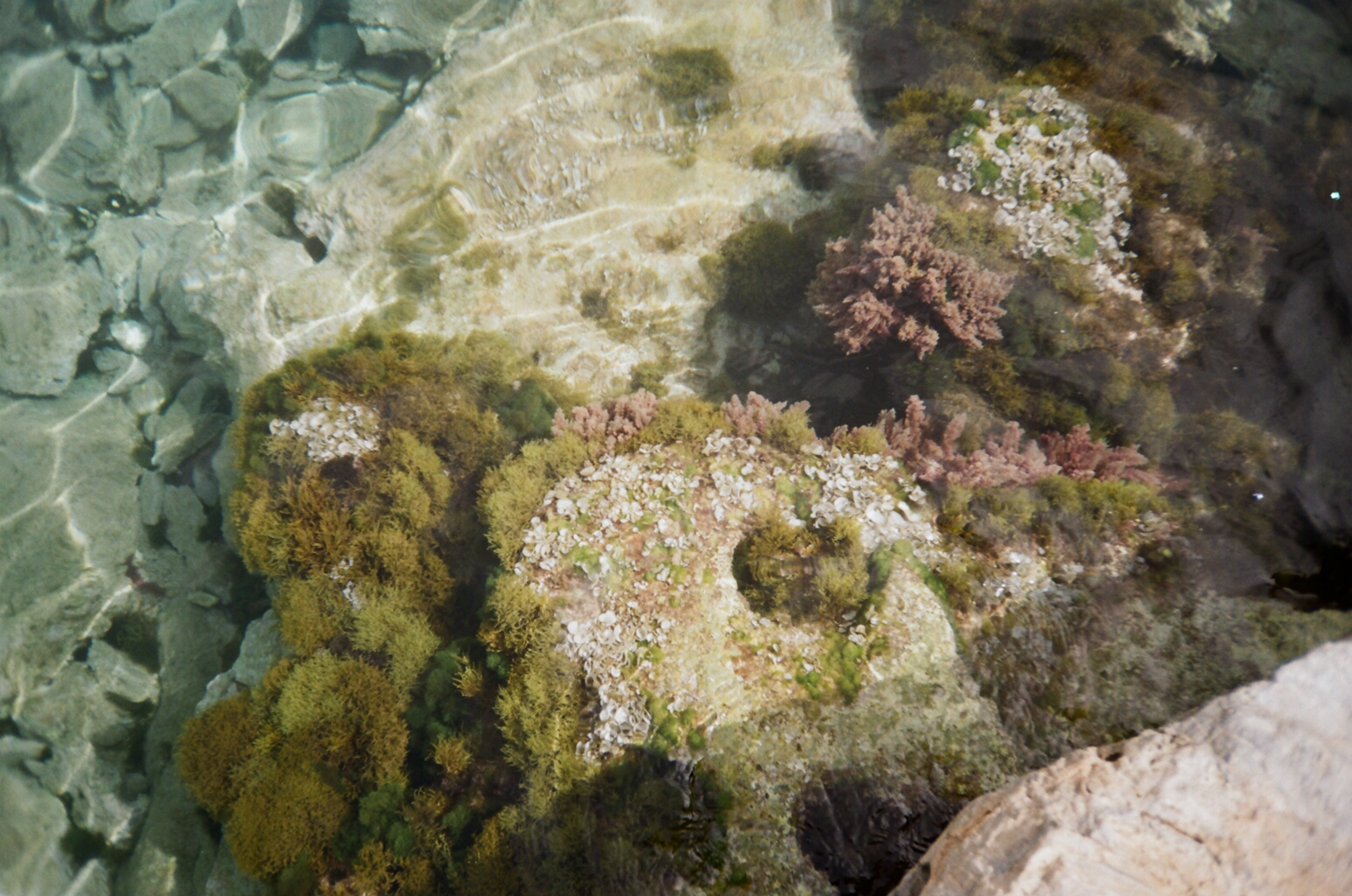
Whether growing on Manos Bazanis’ Athen’s rooftop, foraged by chefs on coastlines, or grown as interactive artworks, these salt-tolerant plants and halophytes will likely enter our coastal diets as salt content increases. In one tasting I hosted with the plants Bazani’s and I grew, I struggled to figure out how to prepare Elytrigia sartorii, a seagrass with a wheat-like texture, and while the flowers of Brassica oleracea, a relative of kales and cabbages, are an easy garnish, they don’t compare to their heartier relatives. The public delighted in the flavors of the most familiar and easiest to prepare such as wild oregano (Origanum microphyllum), a more potent and fragrant variety of cultivated oregano, and when pickled, Hymenonema graecum, a dandelion-like plant native to Crete, had some real potential. The crowd-pleaser and my personal favorite was the soft salty leaves of Crithmum maritimum or rock samphire, which I predict will be on more and more future plates. There is a movement to grow more halophytes spreading across Europe and it is likely that they will become more prevalent and increasingly ubiquitous.
Below is a traditional recipe for Kritamos and Caper leaves as they are eaten in Greece:
Kritamos or sea fennel, is a flavorful and supple green that is served as “horta” or wild green. I first had it this summer and was told a similar recipe orally each time I had it.
- The first step is always foraging, although now it is being cultivated by some farmers and it can be found in farmers markets.
- Blanch the leaves for about 45-90 seconds, until they are bright green and then rush into an ice bath.
- Season with olive oil and lemon and you probably wont need salt but a bit of sea salt to taste.
- Eat on everything, as a salad topped with feta and tomato as is done in Greece, as a topping for a sandwich or pizza, or as a side.

